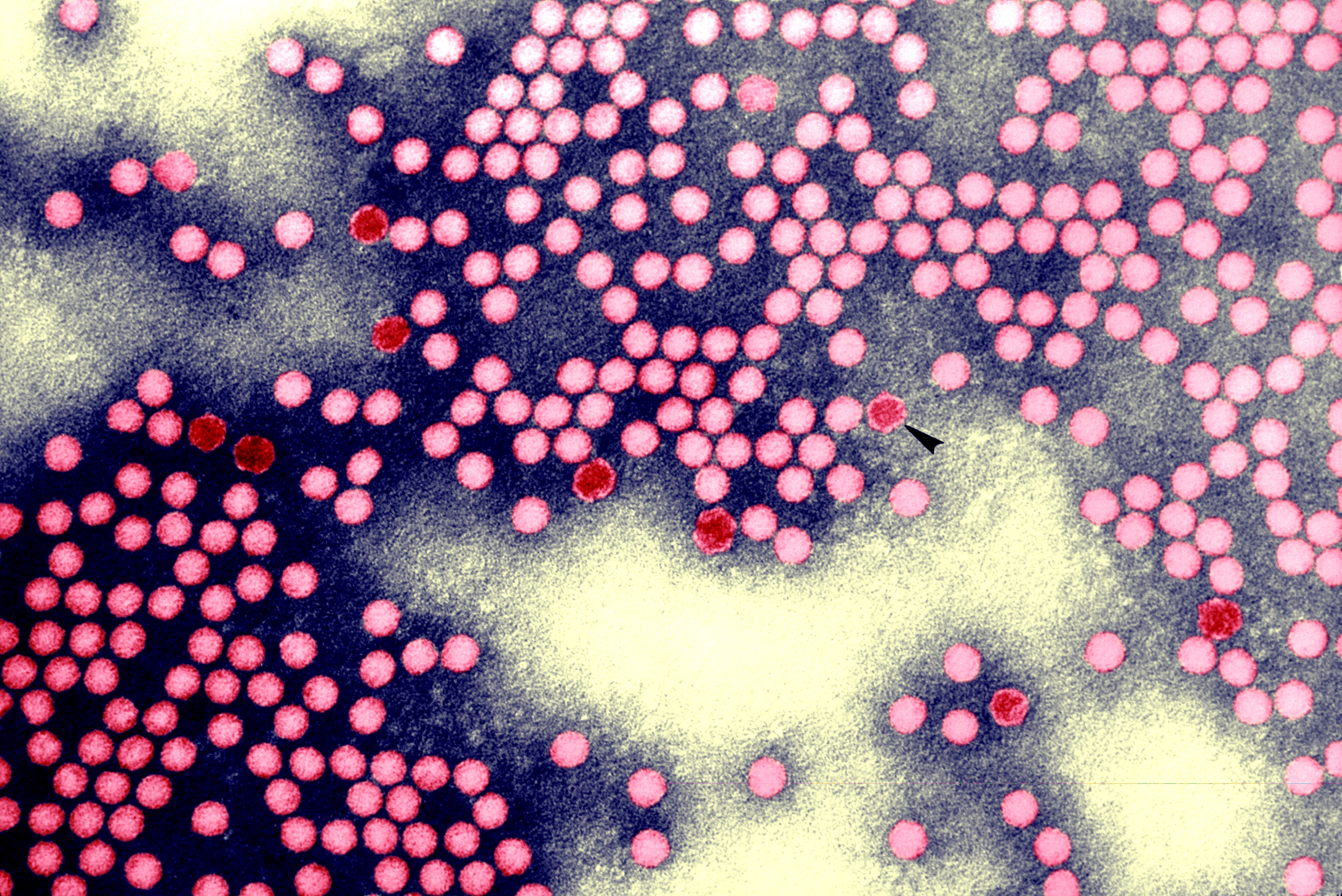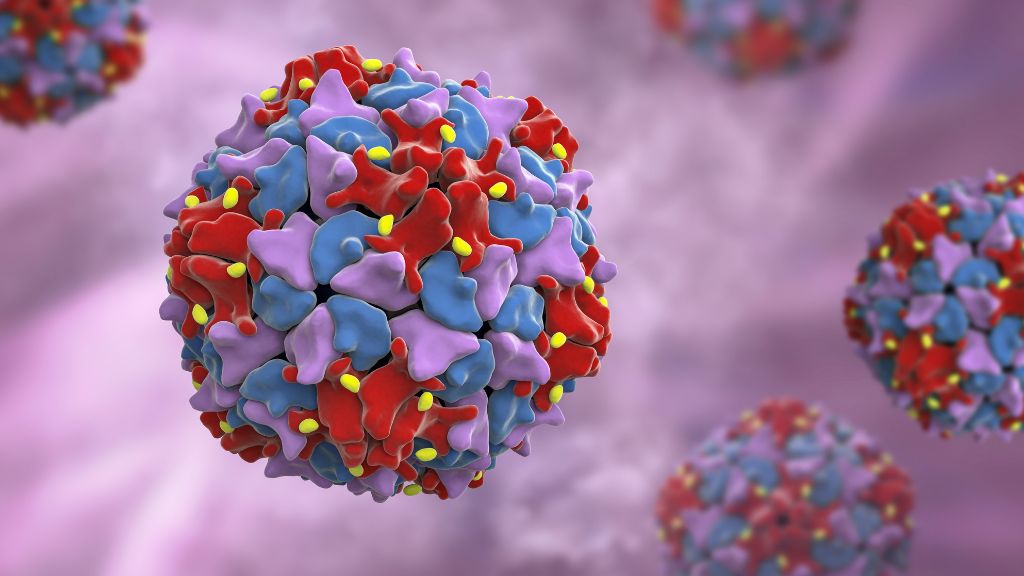
Poliovirus
A poliovirus, the causative agent of polio, is a serotype of the species Enterovirus C, in the family of Picornaviridae. There are three poliovirus serotypes: types 1, 2, and 3. Poliovirus is composed of an RNA genome and a protein capsid. The genome is a single-stranded positive-sense RNA genome that is about 7500 nucleotides long. The viral particle is about 30 nm in diameter with icosahedral symmetry. Because of its short genome and its simple composition—only RNA and a nonenveloped icosahedral protein coat that encapsulates it—poliovirus is widely regarded as the simplest significant virus. Poliovirus was first isolated in 1909 by Karl Landsteiner and Erwin Popper. The structure of the virus was first elucidated in 1958 using x-ray diffraction by a team at Birkbeck College led by Rosalind Franklin, showing the polio virus to have icosahedral symmetry.



